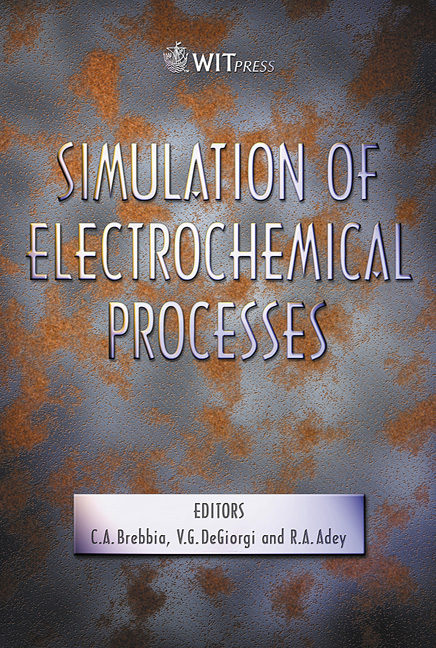Galvanic Corrosion Modeling In Flowing Systems
Price
Free (open access)
Transaction
Volume
48
Pages
8
Published
2005
Size
439 kb
Paper DOI
10.2495/ECOR050061
Copyright
WIT Press
Author(s)
D. A. Shifler
Abstract
Contact between dissimilar alloys will generate galvanic currents based on a variety of factors. The extent of risk to the overall systems and specifically to the more electronegative alloy materials can be clarified if the magnitude of the corrosion rate at various locations can be modeled and calculated. When a more electropositive cathode alloy is separated from the electronegative anode alloy in a complex geometry, there will be a variable distance between the anode and cathode and fluid flow characteristics may influence variations in the limiting current density. In systems containing elbows, the current and potential distribution will not be only in the longitudinal direction, but will have a radial contribution to current flow and corresponding potential changes. Keywords: galvanic corrosion, current distribution, flow, modeling, piping, boundary layer, polarization, dissimilar alloys, bimetallic corrosion. 1 Introduction The effect of coupling two different metals/alloys together, either directly or through an external path, increases the corrosion rate of the anodic alloy (the material with the more electronegative potential) and reduces or suppresses the corrosion rate the cathodic alloy (the material possessing the more electropositive potential). The electrochemical degradation derived from the joining of two or more different or dissimilar alloys is termed galvanic corrosion. Galvanic corrosion causes failures in a wide variety of environments such as atmospheric, automotive, seawater, soil, freshwater, or oil and gas. The necessary conditions for galvanic corrosion require: (1) dissimilar alloys, (2) electrical contact, either directly or by a secondary, grounding path, between the dissimilar alloys, and (3) an electrolyte. The coupling of dissimilar alloys in conducting, corrosive solutions such as seawater, oil and gas, and biological
Keywords
galvanic corrosion, current distribution, flow, modeling, piping, boundary layer, polarization, dissimilar alloys, bimetallic corrosion.





